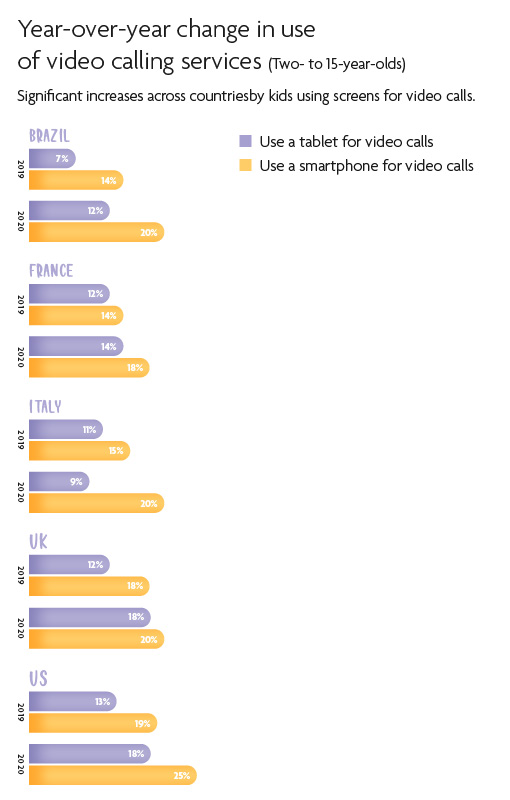“Unprecedented.” It’s a simple word to describe what has been a very (very!) complicated 2020. In a good year, most kids content takes 18 months to get to screen. That means creators today are looking at a 2022 release for a recently greenlit series. But how does one plan for two years down the line when the present is unprecedented?
From the “silent generation” influenced by a pair of world wars, to a prosperous “baby boom” that spoke of nothing but promise and potential, to the launch of the internet and all that entailed—few global events have the power to collectively shape a generation. But for today’s Gen Alphas and Gen Zs, COVID-19 is likely to be one of those defining experiences.
So how can the industry plan for a post-pandemic future? To start, you have to talk to your audience today. Experts from Disney, MarketCast Kids and Dubit went right to the source, checking in with families about how their lives have changed in order to discern which new trends and habits are likely to have staying power. There’s still time to sign up for our Kids of 2022 virtual keynote series for even more future-focused audience intel.
By: David Kleeman and Adam Woodgate
Over the years, Dubit’s research has consistently found that children’s foremost desire is for more time with their parents. But there’s a disconnect between what kids want and what actually happens. Roughly 70% of young people across the US, UK, France, Italy and Brazil say they enjoy doing things as a family, but well under a quarter say they do so daily.
So it’s not surprising that when faced with this devastating and invisible threat, families opened up as they locked down. They tightened their nuclear orbit and deepened their bonds, quickly adopting new togetherness habits and traditions that they plan to keep even as the world opens up.
COVID choices
Not surprisingly, “more” best describes media use during lockdown. Families added services and dropped screen-time restrictions.
All subscription-based entertainment rose significantly year over year, and purchasing of premium VOD services was up more than 40%. We had anticipated that families might cut back, given economic uncertainty due to closures, layoffs and work-from-home. Yet in the short term, nearly every parent said the added costs for home entertainment were offset by lockdown limitations, such as closed theaters or the hiatus of sports.
Family entertainment practices also became more “resourceful.” Parents did their best to make replacement activities feel special, jazzing up movie nights with sweets and popcorn, or bringing warmth to the evening with hot chocolate, marshmallows and sleepovers.
Many held game nights or quizzes with extended family via Zoom. One father taught his son a new skill (leaving the mother unamused): “My son played online poker with his dad and liked that a bit too much, I think.”
Older tweens and teens exploited every communication platform to keep close to friends. Kids are “loitering” in Fortnite Creative, talking gaming in Discord, and using adult video chat platforms in greater numbers than ever.
When kids are overwhelmed or made anxious by what’s happening around them, familiarity breeds contentment.
Long-established video game franchises made big comebacks. Children returned to favorites from the past like Sonic, Animal Jam and Clash of Clans (each jumped 50% or more in mentions year over year). Angry Birds rose almost as much. Even Grand Theft Auto—hardly calming or kid-friendly content, but a game that had passed its peak—rose in daily use. In comparison, few new games emerged during the pandemic. PlayersUnknown Battlegrounds, a battle royale game most popular (and controversial) in Asia, grew its US audience. Another battle royale that’s the top game in Brazil, Free Fire, got its first spontaneous mentions in the US.
In video, steep adoption was predictable for Disney+, but parents said they chose it for safe content the family could watch together. Series that already brought families together before the pandemic continued to show strength, especially cooking, competition and game shows where parents and kids could find a contestant or character to root for. Some carried the on-screen action into real life, holding their own cooking and baking games, or creating backyard “ninja” obstacle courses. Reality shows, however, are not built for repeat viewing, and it remains to be seen how soon they can return to new production.

Loyalty longevity
So as families turn inward, seeking comfort in private bubbles, what will drive loyalty post-pandemic? We’ve identified three key elements. Was the platform or service responsive, inviting and listening to feedback? Did it help support a feeling of normalcy when nothing was normal (such as Roblox birthday parties or concerts through Minecraft and Fortnite)? And finally, did it respect kids’ need for age-appropriate information that was neither frightening nor coddling?
When kids are again able to play freely, we anticipate a drop in media use as they put down devices and pick up face-to-face play and sport.
Media companies shouldn’t worry—they’ll come back, though perhaps with more balance between digital and physical play.
Paid entertainment services and relaxed device time rules are the lockdown practices most likely to reverse in the years to come. Parents were anxious before about their children’s reliance on technology and media, but set aside concerns as TV, phones, tablets and computers became children’s sole link to entertainment, learning, play and friends. When that pressure’s off—and whenever children return to school—parents may “sneak in” cutbacks to relieve their subscription bottom line. They’ll keep the platforms that continually refresh content (we’ve already heard from parents that Disney+ needs new updates) and those with the most emotional resonance (the platforms that keeps kids from screaming).
Even if films (and fans) return to theaters, it will be for shorter windows before going to cable or streamers. Now that families have recreated the cinema experience at home and much more affordably, it will take more than soda and popcorn to bring them back. Theaters will likely need to step up the pre-pandemic practice of filling empty moments with special event programming—live experiences that can’t be viewed at any other time or place.
Zoom will return to being a staid, business- oriented platform. Young people reached Zoom fatigue in the spring; if they need to endure another semester or year of virtual learning, plus their family and friend video chats, they’ll be well and truly done with it. Older kids will return their full focus to social gaming platforms and image- or video-based communication apps. Younger chil- dren never were suited to video meetings, as they lack context for interaction, so parents will replace them long term with playful and purpose-made platforms like Messenger Kids, Kinzoo, Marco Polo Video Chat and CBBC Buzz.
Engaged experiences
Kids stuck at home are feeling a strong need for connection, communication and care. They’re opting for experiences that feel responsive. Fortnite added the Creative Playground where users can have adventures with friends; authors and musicians performed live on YouTube; and podcasts dropped new episodes on a predictable schedule to offer something to anticipate.
We at Dubit have long talked about “emotional scheduling” and the theory that time of day— what one’s been doing and is about to do—is a proxy for mood state (which drives decision- making about platforms and content). During lockdown, however, time has lost its meaning. The pre-pandemic peaks and valleys of media use have flattened into a constant “on.”
In 2022, young people may have occasional Zoom classes, training or meet-ups, but their time will largely be their own, and they will shape it to their own needs and interests. It will be hard to return them to “push” entertainment and learning. Content creators will have to give up some control and transform into guides supporting young people’s exploration of personal passions.
As we emerge from the pandemic in the coming years, we believe loyalty will remain with content and platforms that made kids feel special, engaged and heartened. Families will keep their new social rituals even as they slowly widen their circle again. Winning brands must be flexible and playful.
We still have a way to go before there’s a fixed “new normal.” In the meantime, are you listening to your audiences?
Dubit Trends is a periodic quantitative survey of two- to 15-year-olds in the US, UK and several other countries. The April 2020 wave captured adaptations in the first weeks of lockdown surrounding device and platform use, content discovery and choice, and purchasing habits. For an up-to-date snapshot bringing statistics to life, we conducted parent interviews in August using Dubit’s virtual research facility, The Clickroom.
David Kleeman is SVP of global trends, and Adam Woodgate is SVP of media insights.
























